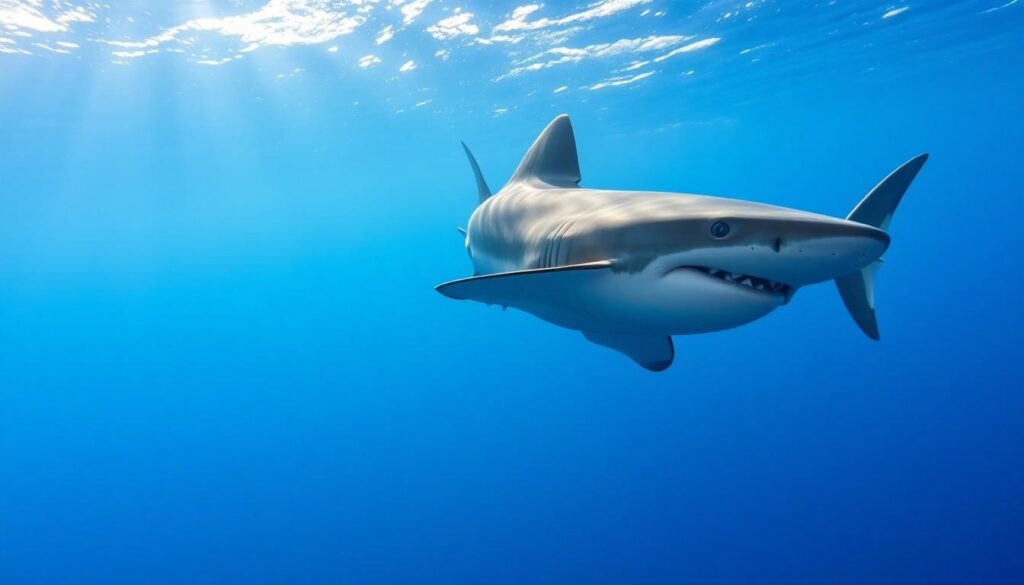Mako sharks are renowned for their incredible speed, making them one of the fastest fish in the ocean. These sleek predators can reach speeds up to 60 miles per hour, showcasing their agility and power as they hunt. If you’re curious about how these remarkable creatures achieve such impressive bursts of speed, you’re in the right place.
Understanding the mako shark’s speed not only highlights its role in the marine ecosystem but also sparks interest in the broader world of sharks. Whether you’re an avid diver, a marine enthusiast, or just someone fascinated by the ocean’s wonders, the mako shark’s impressive capabilities will surely captivate you. Dive in to discover more about this extraordinary species and what makes it a true marvel of the sea.
Overview of Mako Sharks
Mako sharks belong to the Lamnidae family, comprising two species: the shortfin mako (Isurus oxyrinchus) and the longfin mako (Isurus paucus). These sharks are known for their incredible speed and agility, essential traits that enhance their predatory capabilities.
Physical Characteristics
Mako sharks possess streamlined bodies, enabling efficient movement through water. They feature a conical snout, a large dorsal fin, and long pectoral fins. The shortfin mako typically measures 10 to 12 feet in length, while the longfin mako can grow up to 14 feet. Both species exhibit a distinct blue or gray coloration on their dorsal side, with a lighter underside that helps them camouflage in the ocean.
| Species | Average Length | Maximum Length | Average Weight |
|---|---|---|---|
| Shortfin Mako | 10-12 feet | 12 feet | 300-500 pounds |
| Longfin Mako | 10-14 feet | 14 feet | 400 pounds |
Habitat and Distribution
Mako sharks primarily inhabit both temperate and tropical oceans worldwide. They thrive in deep waters but can be found near the surface, particularly during feeding migrations. Their distribution ranges from the Atlantic to the Pacific and Indian Oceans, with notable populations near coastal continental shelves.
Diet and Hunting Behavior
Mako sharks are apex predators, primarily consuming species such as tuna, mackerel, and other fast-moving fish. They utilize their speed to chase down prey, relying on keen eyesight and electroreceptors to locate them. The hunting technique involves sudden bursts of speed and powerful bites, making them formidable competitors in the ocean’s food chain.
Reproduction and Lifespan
Mako sharks reproduce through viviparity, with females giving live birth after a gestation period of 15 to 18 months. A typical litter consists of 4 to 25 pups. In the wild, mako sharks can live up to 20 years, with some individuals reaching maturity at around 5 to 6 years.
Understanding these factors contributes to recognizing the ecological significance of mako sharks and their vulnerability due to overfishing and habitat degradation.
Speed Characteristics
Mako sharks are among the fastest fish in the ocean, showcasing remarkable speed that plays a crucial role in their predatory lifestyle. Knowing their speed characteristics provides insight into their hunting techniques and survival strategies.
Maximum Speed Recorded
Mako sharks have been recorded swimming at speeds up to 60 miles per hour (97 kilometers per hour). This unparalleled speed allows them to chase down agile prey and evade potential threats. The shortfin mako (Isurus oxyrinchus) holds the title for the fastest recorded, significantly impacting its effectiveness as a predator in the marine ecosystem.
| Shark Species | Maximum Speed (mph) | Maximum Speed (km/h) |
|---|---|---|
| Shortfin Mako | 60 | 97 |
| Longfin Mako | 46 | 74 |
Factors Affecting Speed
Several factors influence the speed of mako sharks, including body morphology, water temperature, and hunting behavior.
- Body Morphology: Streamlined bodies reduce drag, enhancing acceleration and cruising speed.
- Water Temperature: Higher temperatures can increase metabolic rates, allowing for quicker bursts of speed.
- Hunting Behavior: During predation, mako sharks use their agility to ambush fast-swimming prey, maximizing their speed when necessary.
Understanding these factors not only highlights the biological adaptations of mako sharks but also emphasizes their role in maintaining the balance within marine ecosystems.
Comparison with Other Shark Species
Mako sharks stand out due to their incredible speed compared to other shark species. Understanding these differences helps clarify their unique role in marine ecosystems.
Great White Sharks
Great white sharks (Carcharodon carcharias) are known for their power and size. While they can swim up to 25 miles per hour in short bursts, their average cruising speed is lower than that of mako sharks. Here’s a quick comparison of key characteristics:
| Feature | Mako Sharks | Great White Sharks |
|---|---|---|
| Max Speed | 60 mph | 25 mph |
| Average Length | 10-12 ft (shortfin) | 13-16 ft |
| Diet | Fast fish (tuna, etc.) | Seals, large fish |
| Habitat | Temperate & tropical oceans | Coastal waters |
Great whites rely on stealth and ambush tactics, showcasing unique hunting strategies that differ from the aggressive pursuit of mako sharks.
Tiger Sharks
Tiger sharks (Galeocerdo cuvier) possess notable size and strength, reaching lengths of 10 to 14 feet. Their speed, however, is generally around 20 miles per hour. The differences in their physical attributes are as follows:
| Feature | Mako Sharks | Tiger Sharks |
|---|---|---|
| Max Speed | 60 mph | 20 mph |
| Average Length | 10-12 ft (shortfin) | 10-14 ft |
| Diet | Fast fish, squid | Wide variety (fish, birds, marine mammals) |
| Habitat | Open ocean | Coastal waters, estuaries |
Tiger sharks, known for their adaptability, often hunt in murky waters, appealing to various prey types. This contrasts with the speed-focused hunting style of mako sharks.
Importance of Speed in Mako Sharks
Speed plays a crucial role in the survival of mako sharks, impacting various aspects of their behavior and ecological niche. Mako sharks utilize their remarkable speed predominantly for hunting and evading predators. Understanding the significance of this speed enhances appreciation of their ecological function.
Hunting Efficiency
Mako sharks rely on speed to catch agile prey like tuna and mackerel. Their ability to reach speeds up to 60 miles per hour allows for rapid acceleration during hunts, making them highly effective predators. This hunting efficiency promotes population control of their prey species, contributing to balanced marine ecosystems.
Predator-Escape Mechanism
Speed also serves as a defense mechanism against larger predators. Although adult mako sharks face limited threats, their swiftness helps avoid encounters with species such as great white sharks. Quick bursts of speed enable mako sharks to evade potential dangers, securing their survival in competitive ocean environments.
Migration and Habitats
Mako sharks undertake significant migrations to find food and breeding grounds. Their speed facilitates covering vast distances in search of optimal habitats, allowing them to exploit seasonal changes in prey availability. Quick travel also supports reproductive success, as they can reach suitable spawning locations efficiently.
Ecological Impact
The exceptional speed of mako sharks influences the balance in marine ecosystems. By controlling fish populations and competing with other predators, mako sharks help maintain the health of ocean habitats. Their role as apex predators ensures the stability of marine food webs.
Speed Comparison with Other Sharks
Here’s a comparison of speeds among notable shark species:
| Shark Species | Maximum Speed (miles per hour) | Hunting Strategy |
|---|---|---|
| Shortfin Makos | 60 | Active pursuit |
| Great Whites | 25 | Stealth and ambush |
| Tiger Sharks | 20 | Opportunistic feeding |
This table underscores the unique hunting strategies employed by different shark species, highlighting the mako’s unmatched speed and agility in the ocean. The advantages afforded by their speed enable mako sharks to dominate their ecological niche effectively.
Conclusion
Mako sharks are truly remarkable creatures that embody the power and agility of the ocean’s predators. Their incredible speed not only enhances their hunting abilities but also plays a vital role in maintaining the balance of marine ecosystems. Understanding these dynamics helps you appreciate the importance of these sharks in the ocean’s intricate web of life.
As you explore more about mako sharks and their behaviors, you’ll gain insight into the challenges they face in today’s waters. Protecting their habitats and ensuring sustainable practices is crucial for their survival. By learning about mako sharks, you’re taking a step toward advocating for the conservation of these extraordinary animals and the health of our oceans.
Frequently Asked Questions
What is the maximum speed of mako sharks?
Mako sharks can reach incredible speeds of up to 60 miles per hour. This remarkable speed makes them one of the fastest shark species, enhancing their effectiveness as predators in the ocean.
What types of mako sharks exist?
There are two main types of mako sharks: the shortfin mako (Isurus oxyrinchus) and the longfin mako (Isurus paucus). The shortfin typically measures between 10 to 12 feet, while the longfin can grow up to 14 feet in length.
What do mako sharks eat?
Mako sharks primarily feed on fast-moving fish such as tuna and mackerel. Their speed and keen eyesight allow them to be efficient hunters, making them apex predators in their marine environments.
How do mako sharks reproduce?
Mako sharks reproduce through viviparity, meaning that females give live birth. After a gestation period of 15 to 18 months, they typically produce between 4 to 25 pups, depending on the species.
How long do mako sharks live?
Mako sharks can live up to 20 years in the wild. They typically reach sexual maturity at around 5 to 6 years of age, allowing them to start reproducing and contributing to their populations.
What role do mako sharks play in the marine ecosystem?
As apex predators, mako sharks help control fish populations like tuna and mackerel, maintaining balance within the marine ecosystem. Their hunting behavior influences the dynamics of the ocean’s food web.
How does speed benefit mako sharks?
Speed benefits mako sharks by enhancing their hunting efficiency and serving as a defense mechanism against larger predators. It allows them to catch quick prey and evade threats, ensuring their survival.
How do mako sharks compare to other shark species?
Mako sharks are faster than most other shark species, capable of swimming at 60 miles per hour. In comparison, great white sharks swim at about 25 miles per hour and tiger sharks around 20 miles per hour, emphasizing the mako’s unique speed and hunting adaptations.


